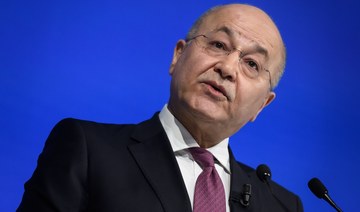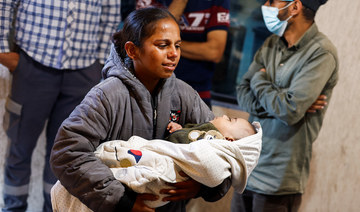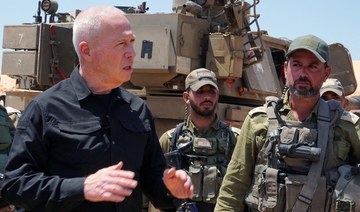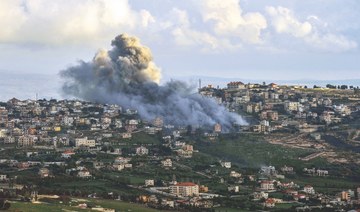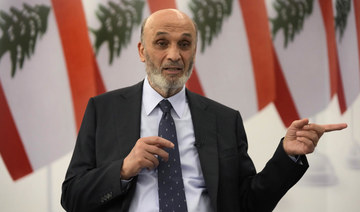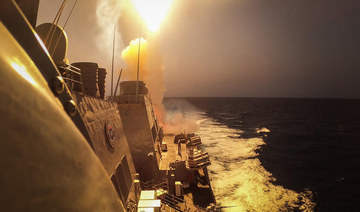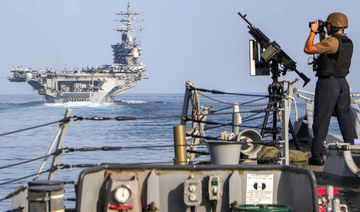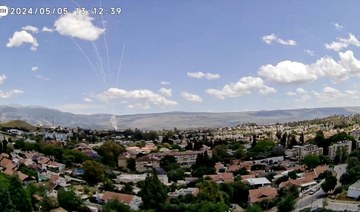MOSUL: Anan Yasoun rebuilt her home with yellow cement slabs amid the rubble of Mosul, a brightly colored manifestation of resilience in a city that for many remains synonymous with the Daesh group’s reign of terror.
In the three years since Iraqi forces, backed by a US-led coalition, liberated Mosul from the militants, Yasoun painstakingly saved money that her husband earned from carting vegetables in the city. They had just enough to restore the walls of their destroyed home; money for the floors was a gift from her dying father, the roof a loan that is still outstanding.
Yasoun didn’t even mind the bright yellow exterior — paint donated by a relative. “I just wanted a house,” said the 40-year-old mother of two.
The mounds of debris around her bear witness to the violence Iraq’s second-largest city has endured. From Mosul, Daesh had proclaimed its caliphate in 2014. Three years later, Iraqi forces backed by a US-led coalition liberated the city in a grueling battle that killed thousands and left Mosul in ruins.
Such resilience is apparent elsewhere in the city, at a time when Baghdad’s cash-strapped government fails to fund reconstruction efforts and Daesh is becoming more active across the disputed territories of northern Iraq.
Life is slowly coming back to Mosul these days: merchants are busy in their shops, local musicians again serenade small, enthralled crowds. At night, the city lights gleam as restaurant patrons spill out onto the streets.
The UN has estimated that over 8,000 Mosul homes were destroyed in intense airstrikes to root out Daesh. The nine-month operation left at least 9,000 dead, according to an AP investigation.
Memories of the group’s brutality still haunt locals, who remember a time when the city squares were used for the public beheading of those who dared violate the militants’ rules.
The Old City on the west bank of the Tigris River, once the jewel of Mosul, remains in ruins even as newer parts of the city have seen a cautious recovery. The revival, the residents say, is mostly their own doing.
“I didn’t see a single dollar from the government,” said Ahmed Sarhan, who runs a family coffee business.
Antique coffee pots, called dallahs, line the entrance to his shop, which has been trading coffee for 120 years. An aging mortar and pestle, used by Sarhan’s forefathers to grind beans, sits in his office as evidence of his family’s storied past.
“After the liberation, it was complete chaos. No one had any money. The economy was zero,” he said. His business raked in a measly 50,000 Iraqi dinars a day, or around $40. Now, he makes closer to about $2,500.
But even as Sarhan and other merchants are starting to see profits — despite the impact of the coronavirus pandemic — ordinary laborers are struggling. Sarhan employs 28 workers, each getting about $8 a day.
“It is nothing ... they will never be able to rebuild their homes,” he says.
Since the ouster of Daesh in 2017, the task of rebuilding Mosul has been painfully slow. Delays have been caused by lack of coherent governance at the provincial level; the governor of Nineveh province, which includes Mosul, has been replaced three times since liberation.
With no central authority to coordinate, a tangled web of entities overseeing reconstruction work — from the local, provincial and federal government to international organizations and aid groups — has added to the chaos.
The government has made progress on larger infrastructure projects and restored basic services to the city, but much remains unfinished.
Funds earmarked for reconstruction by the World Bank were diverted to help the federal government fight the coronavirus as state coffers dwindled with plunging oil prices. Meanwhile, at least 16,000 Mosul residents appealed for government cash assistance to rebuild their homes.
Only 2,000 received financial assistance, said Zuhair Al-Araji, the mayor of Mosul district.
“There’s no money,” he said. “They have to rebuild on their own.”
Mosul residents eye government policies with suspicion and suspect local officials are too corrupt to help them.
“Whatever funds are provided, they will steal it,” said Ammar Mouwfaq, who spent all his savings to re-open his soap shop in the city last year.
A photo of his father hangs inside the shop, which he took over in the 1970s. Neat stacks of the region’s famous olive oil soap, imported from the Syrian city of Aleppo, tower above him.
“What you see now, I did alone,” he added.
On one thoroughfare the ruins of cinemas bombed by Daesh — the militant group’s strict interpretation of Islam banned such forms of entertainment — are a stark contrast to the shops and restaurants abuzz with customers.
The Old City, with its labyrinth of narrow streets dating back to the Middle Ages, now serves as an eerie museum of IS horrors. Misshapen iron rods jut out of what’s left of houses they were designed to fortify. Smashed pieces of alabaster stone and masonry, once extolled by historians for architectural significance, lie among the debris. Signs of a former life — a pair of women’s shoes, a notebook covered in hearts, shells from exploded ammunition — are untouched.
“Demolition is forbidden” reads a graffiti written on a slab of wall surrounded by rubble, a testament to Mosul’s unwavering dark humor.
The Mosul Museum, where Daesh militants filmed themselves smashing priceless antiquities to dust, partially re-opened in January. But apart from occasional contemporary art exhibits such as that of Iraqi sculptor Omer Qais last month, there is nothing to see.
On the other side of town, Sarhan, the coffee trader, invites anyone who cares to see his collection of antique swords, plates and bowls he painstakingly hunted down. In the 12th century, Mosul was an important hub for trade; a century later, its intricate metalwork rose to prominence.
“This is our history,” said Sarhan, holding up a rusting bronze plate, engraved with 1202, the year it was made.
“If I don’t protect it, who will?”
Iraqis slowly rebuild Mosul, with little aid from government
https://arab.news/2vmy5
Iraqis slowly rebuild Mosul, with little aid from government
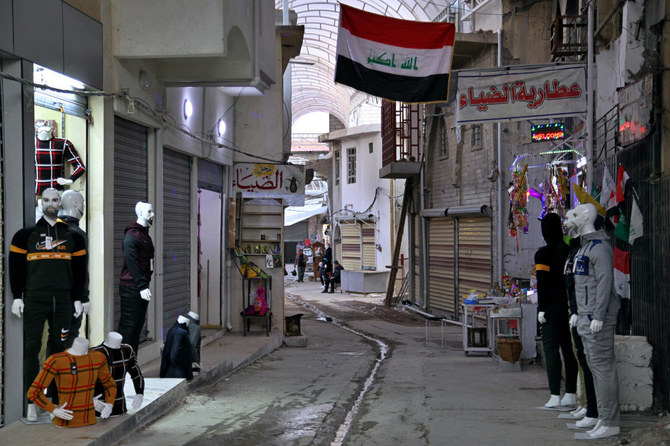
- The UN has estimated that over 8,000 Mosul homes were destroyed in intense airstrikes to root out Daesh
- Memories of the group’s brutality still haunt locals
Palestinians flee chaos and panic in Rafah after Israel’s seizure of border crossing
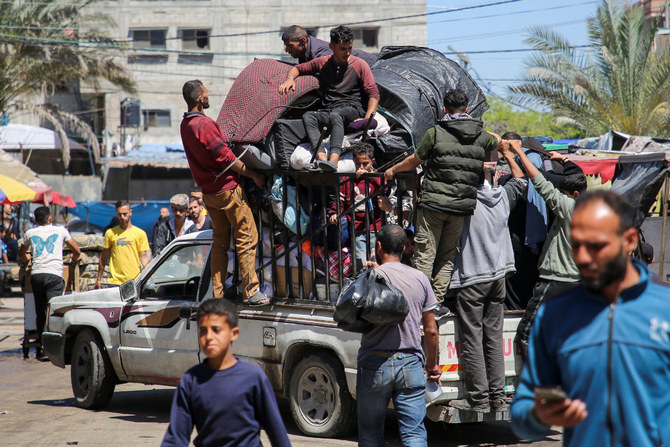
- The main hospital has shut down, leaving little care for people suffering from malnutrition, illnesses and wounds
- Rafah had 250,000 residents before the war. Its population had ballooned to some 1.4 million as people from across Gaza fled there
RAFAH, Gaza Strip: Tens of thousands of displaced and exhausted Palestinians have packed up their tents and other belongings from Rafah, dragging families on a new exodus.
The main hospital has shut down, leaving little care for people suffering from malnutrition, illnesses and wounds.
And with fuel and other supplies cut off, aid workers have been scrambling to help a population desperate after seven months of war.
As the possibility of a full-scale invasion looms, Gaza’s overcrowded southernmost city has been thrown into panic and chaos by Israel’s seizure of the nearby border crossing with Egypt.
Families uprooted multiple times by the war were uncertain where to go: to the half-destroyed city of Khan Younis, to points even farther north, or to an Israeli-declared “humanitarian zone” in Gaza already teeming with people with little water or supplies?
The past three days, streams of people on foot or in vehicles have jammed the roads out of Rafah in a confused evacuation, their belongings piled high in cars, trucks and donkey carts. All the while, Israeli bombardment has boomed and raised palls of smoke.
“The war has caught up with us even in schools. There is no safe place at all,” said Nuzhat Jarjer. Her family packed on Wednesday to leave a UN school-turned-shelter in Rafah that was rapidly emptying of the hundreds who had lived there for months.
Rafah had 250,000 residents before the war. Its population had ballooned to some 1.4 million as people from across Gaza fled there. Nearly every empty space was blanketed with tent camps, and families crammed into schools or homes with relatives. Like the rest of Gaza’s population, they have been largely reliant on aid groups for food and other basics of life.
Israel on Monday issued evacuation orders for eastern parts of the city, home to some 100,000. It then sent tanks to seize the nearby Rafah crossing with Egypt, shutting it down.

It remains uncertain whether Israel will launch an all-out invasion of Rafah as international efforts continue for a ceasefire. Israel has said an assault on Rafah is crucial to its goal of destroying Hamas after the militant group’s Oct. 7 attack on southern Israel that left 1,200 dead and 250 as hostages in Gaza.
The United States, which opposes a Rafah invasion, has said Israel has not provided a credible plan for evacuating and protecting civilians. The war has killed over 34,800 Palestinians, according to Gaza health officials, and has driven some 80 percent of Gaza’s population of 2.3 million Palestinians from their homes.
For now, confusion has reigned. Fearing a greater assault, Palestinians fled districts other than the eastern areas they were ordered to leave. Tens of thousands are estimated to have left, according to a UN official who spoke on condition of anonymity because agencies were still trying to determine precise figures.
Tent camps in some parts of Rafah have vanished, springing up again further north along main roads. New camps have filled streets, cemeteries and the beach in the central Gaza town of Deir Al-Balah, 15 kilometers (10 miles) north, as people flowed in, said Ghada Alhaddad, who works there with the aid group Oxfam, speaking to a briefing by several humanitarian workers.

Others made their way to Khan Younis, much of which was destroyed in a months-long Israeli ground assault.
Suze van Meegen, head of operations for the Norwegian Refugee Council in Palestine, said the Rafah district where she is based “feels like a ghost town.”
The Israeli military told those evacuating to go to a “humanitarian zone” it declared in Muwasi, a nearby rural area on the Mediterranean coast. The zone is already packed with some 450,000 people, according to the UN Few new facilities appear to be prepared, despite the military’s announcements that tents, medical centers and food would be present.
The ground is covered in many places with sewage and solid waste, since there are few sanitation facilities, aid workers say. Clean water is lacking and dehydration is a major problem, with temperatures some days already reaching 100 degrees Fahrenheit (38 Celsius).
The water quality is “horrifically bad. We tested some of the water and the fecal content … is incredibly high,” said James Smith, a British emergency doctor volunteering at the European General Hospital in nearby Khan Younis. Acute jaundice is rampant — and probably caused by hepatitis, but there’s no capabilities to test, he said.
The newly arrived struggle to find tents because of an extreme shortage among aid groups.
Before his family left Rafah to the zone, Iyad Al-Masry said he had to sell food received from aid groups to buy a tent for the equivalent of nearly $400.
His family set up their tent in Muwasi, smoothing the dirt ground before setting down a cradle to rock an infant in. Al-Masri said he has been searching for water and can’t afford the three shekels — a little less than $1 — that sellers charge for a gallon of drinking water.
“We want to eat … We are just waiting for God’s mercy,” he said.
Nick Maynard, a surgeon with Medical Aid for Palestinians who left Gaza on Monday, said two teenage girls who had survivable injuries died last week because of complications from malnutrition.
“They get this vicious cycle of malnutrition, infection, wounds breaking down, more infection, more malnutrition,” said Maynard.
The number of children in Rafah who have lost one or more limbs is “staggering,” said Alexandra Saieh from Save The Children. “These people cannot just pick up and relocate.”
Rafah’s main Youssef Al-Najjar Hospital evacuated on Tuesday. Smith said staff and patients rushed out even though they weren’t under evacuation orders because they feared Israeli troops would raid, just as they did hospitals in northern Gaza and Khan Younis, which were left decimated.
Israel claims Hamas used the hospitals for military purposes, an accusation Hamas and Gaza health officials deny.
Israeli tank shells Wednesday hit about 300 meters (yards) from the Kuwaiti Hospital, one of the few facilities still operating, and wounded several children, according to hospital officials.
The closure of Rafah crossing and the nearby Kerem Shalom crossing from Israel has cut off the entry of food, supplies, and fuel for aid trucks and generators. Aid groups warn they have only a few days of fuel before humanitarian operations and hospitals around Gaza begin to shut down.
Israel said Wednesday it reopened Kerem Shalom, which was shut after Hamas mortars killed four Israeli soldiers nearby, but aid groups said no trucks were entering the Gaza side. Trucks let through from Israel must be unloaded and the cargo reloaded onto trucks in Gaza, but no workers in Gaza can get to the facility to do so because it is too dangerous, the UN says.
Palestinian workers trying to reach the border crossing Wednesday were shot at, and several were wounded, the Israeli military said. It did not specify who opened fire but said it was investigating. Hamas also shelled in the area of Kerem Shalom on Wednesday, saying it was targeting nearby troops.
The UN’s World Food Program has been cut off from its Gaza food warehouse near the Rafah crossing, its deputy executive director Carl Skau said. It procured another warehouse in Deir Al-Balah, but it’s empty until crossings reopen, he said.
Van Meegen, of the Norwegian Refugee Council, said without more supplies, “how do we even begin to prioritize the dribble of humanitarian aid we have here when almost every single person is being forced to depend on it?”
Biden says US will withhold weapons from Israel if it invades Rafah
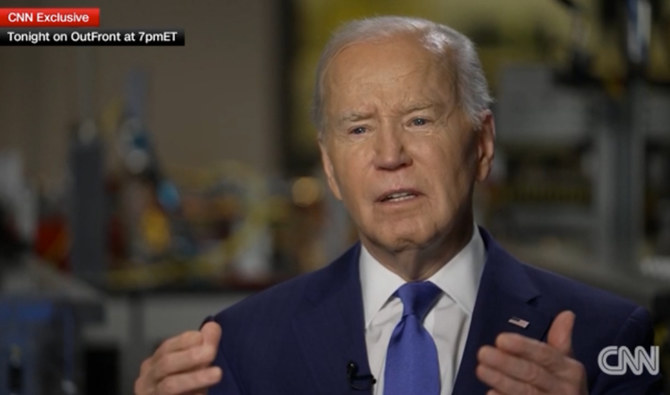
President Joe Biden on Wednesday publicly warned Israel for the first time that the US would stop supplying it weapons if Israeli forces make a major invasion of Rafah, a city in southern Gaza.
“I made it clear that if they go into Rafah..., I’m not supplying the weapons that have been used historically to deal with Rafah, to deal with the cities – that deal with that problem,” Biden said in an interview with CNN.
Biden acknowledged US weapons have been used by Israel to kill civilians in Gaza, where Israel has mounted a seven-month-old offensive aimed at annihilating Hamas. Israel’s campaign has so far killed 34,789 Palestinians, mostly civilians, the Gaza Health Ministry said.
Israel this week attacked Rafah, where more than one million Palestinians have sought refuge, but described it as a limited operation.
A senior US official, speaking on condition of anonymity, said Washington had carefully reviewed the delivery of weapons that might be used in Rafah and as a result paused a shipment consisting of 1,800 2,000-pound (907-kg) bombs and 1,700 500-pound bombs.
US Defense Secretary Lloyd Austin said the decision was taken out of concern for Rafah, where Washington opposes a major Israeli invasion without civilian safeguards.
“Civilians have been killed in Gaza as a consequence of those bombs and other ways in which they go after population centers,” he said when asked about 2,000-pound bombs sent to Israel.
Israel’s campaign in Gaza was triggered by Hamas ‘ Oct. 7 attack on Israel. That killed about 1,200 people with about 250 others abducted, of whom 133 are believed to remain in captivity in Gaza, according to Israeli tallies.
Biden said the US would continue to provide defensive weapons to Israel, including for its Iron Dome air defense system.
“We’re going to continue to make sure Israel is secure in terms of Iron Dome and their ability to respond to attacks that came out of the Middle East recently,” he said. “But it’s, it’s just wrong. We’re not going to – we’re not going to supply the weapons and artillery shells.”
Hezbollah counts the cost of prolonged conflict with Israel in south Lebanon
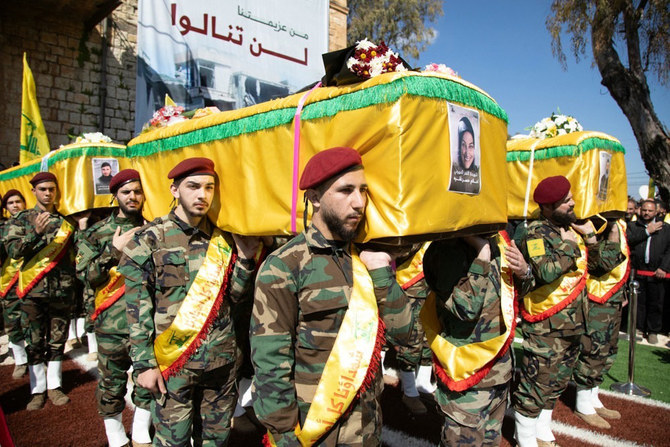
- Since hostilities began after Oct. 7, scores of Hezbollah fighters and commanders have been killed in Israeli strikes
- Observers say Hezbollah could lose support in south Lebanon over failure to protect and compensate civilians
BEIRUT: Israel claims its forces have eliminated half of Hezbollah’s commanders in southern Lebanon in a series of targeted strikes since the two sides began trading fire in the wake of the Oct. 7 Hamas-led attack on southern Israel.
Hezbollah has acknowledged it is “facing a war led by artificial intelligence,” with its secretary-general, Hassan Nasrallah, urging members near the border to avoid using cell phones and the internet, as these devices could be used to track targets.
“The Israelis take advantage of all modern technologies, social networking sites, and information warfare, carrying out new types of operations through systematic destruction and access to cadres and fighters who are influential to (Hezbollah’s) resistance,” Qassem Kassir, a political writer who specializes in Islamic movements, told Arab News.

While Hezbollah has no doubt lost a significant number of fighters and commanders since the outbreak of hostilities, it also has what analysts have called “a deep bench,” capable of fighting a full-scale war.
Given Hezbollah’s demographic advantage and its formidable local support base, analysts express skepticism about whether Israel can achieve its goal of pushing Hezbollah north of the Litani River in Lebanon.
“Today, Hezbollah is fighting a new battle, whether via direct confrontations, which is different from their traditional hit-and-run or guerrilla warfare tactics, or in terms of the quality of weapons and various capabilities that develop day after day,” said Kassir.
Nevertheless, Hezbollah’s ongoing war of attrition with Israel has produced an unexpected psychological, social, and military reality in southern Lebanon, which could cost it dearly if the conflict continues or escalates.
The majority of Lebanese deaths have been recorded on the southern front, with more than 438 noted by Lebanon’s Disaster Risk Management Unit. Most of these deaths are among military-aged males — fighters, rather than civilians.
According to a tally taken by the Associated Press, Israeli strikes have killed more than 350 people in Lebanon, most of them fighters with Hezbollah and allied groups, but also including more than 50 civilians.
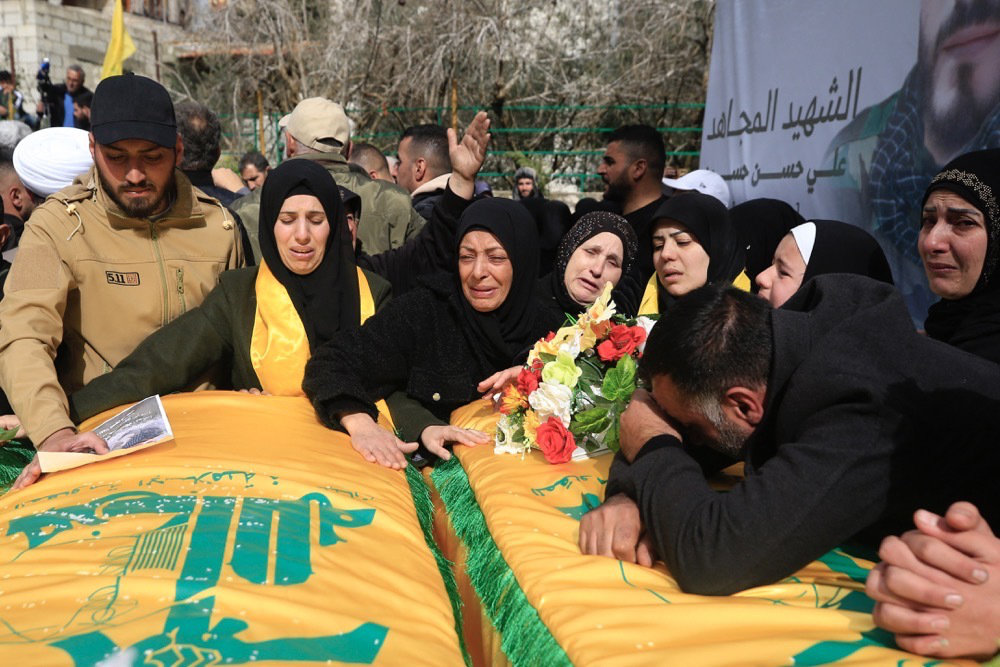
Meanwhile, strikes by Hezbollah have killed at least 10 civilians and 12 soldiers in Israel, and have forced authorities to evacuate civilians away from the border, fearing a possible raid akin to Oct. 7.
Despite its losses, Hezbollah says it has used only a fraction of its capabilities against Israel, with the bulk of its arsenal of drones, missiles, and other advanced weapons supplied by Iran held in reserve should the conflict escalate.
Kassir believes recent Israeli wins have barely made a dent in Hezbollah’s combat machinery, and that the militia has sufficient means and manpower to continue fighting for the long haul.
“The Israeli talk about Hezbollah’s defeat is a kind of psychological warfare,” he said. “Hezbollah can continue fighting. It has so far used only 10 percent of its capabilities and is ready for any battle.
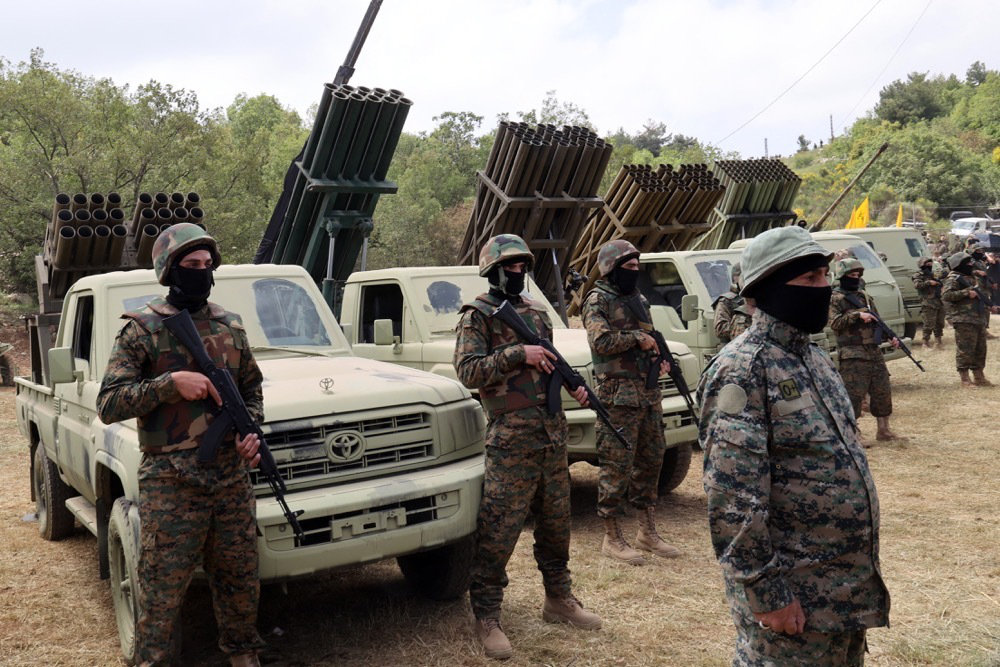
While Hezbollah may be resilient enough to withstand current Israeli attacks, that says nothing of the communities along Lebanon’s southern border.
The daily exchange of fire has maimed and killed scores of civilians and caused significant damage to homes, businesses, farmland, and forests. Tens of thousands of residents have fled their towns and villages for the relative safety of the north.
Some analysts and observers believe support for Hezbollah could quickly wane if the civilian population continues to bear the brunt of these armed exchanges, or if the recent spate of setbacks undermines public confidence.
“There is no doubt that there has been a radical change in the perception of Hezbollah’s circumstances towards the power and deterrence that the party used to boast about,” Ali Al-Amin, editor of the Lebanese news site Janoubia, told Arab News
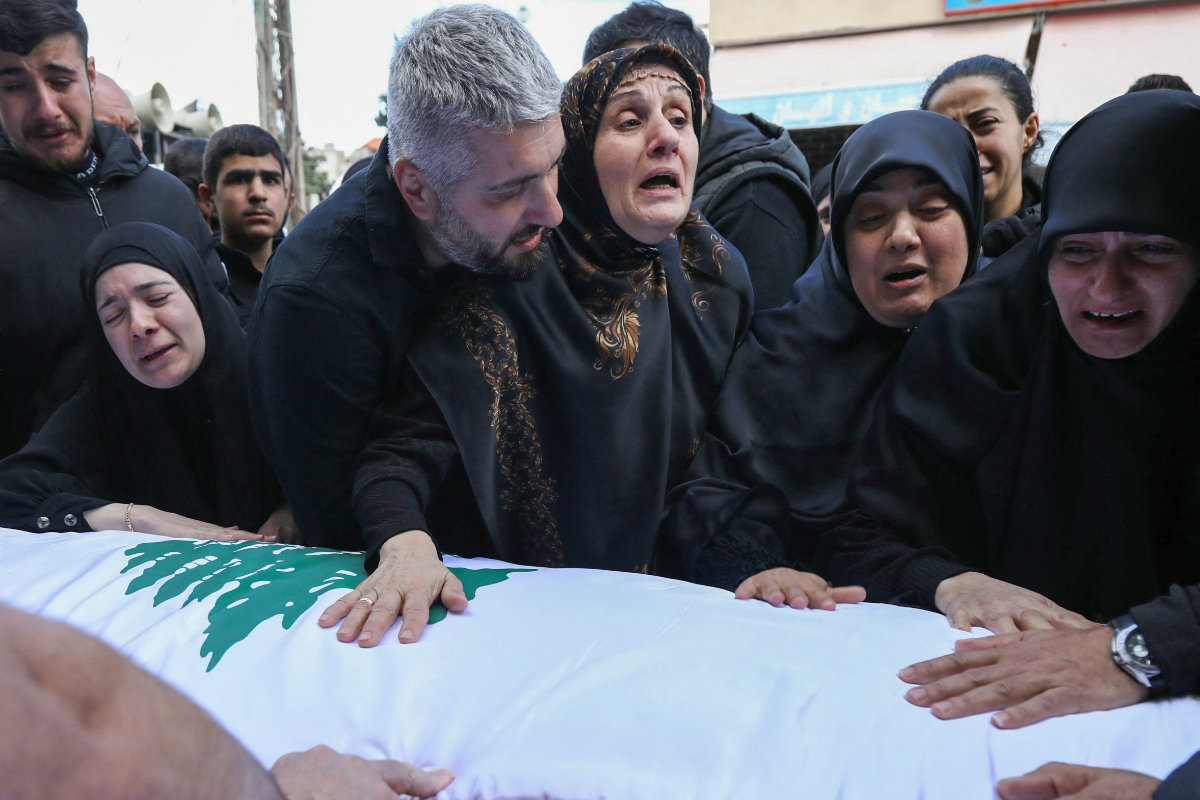
Indeed, as the confidence the group once instilled in the Lebanese population after the 2006 war with Israel begins to dissipate, Al-Amin says Hezbollah may be losing its wider backing.
In particular, residents and business owners in the border regions, who previously built mansions and villas and invested heavily in tourism projects there, are now doubting Hezbollah’s promise to protect them and their assets.
“Hezbollah has not been able to protect this environment, and there is a rift between this environment and what is happening on the border,” said Al-Amin.
“In the villages where the displaced have taken refuge, there are questions such as: ‘Why did Israel manage to catch so many Hezbollah members and not the same in the Gaza Strip? Why were our homes destroyed and on the other side, the settlers’ homes are still standing and were not targeted by Hezbollah’s weapons, as is the case in the Lebanese Kafr Kila? Why does the enemy have so much accurate information about Hezbollah cadres and their movements and thus targets them?’”
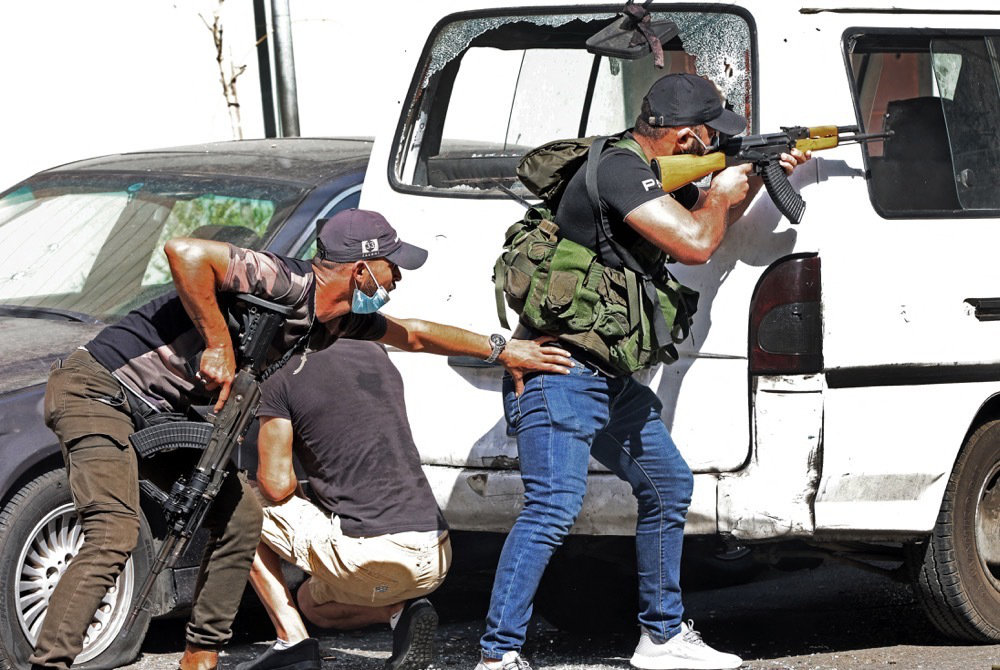
Mindful of the reputational risks, Hezbollah has tried to stage-manage its image and conceal any perceived blunders.
“In the July 2006 war, there was a kind of contract between Nasrallah and his supporters which translated into blind trust in what he says,” said Al-Amin. “But, the scenes of destruction in the frontline villages are not allowed to be published in the media.
“This is because it would give the impression of an Israeli victory and that the rockets fired from Lebanon are for reconnaissance and not to harm, unlike Israel’s scorched-earth tactics for southern Lebanon.”
Nonetheless, the militia’s failings have not gone unnoticed.
“Hezbollah is facing a crisis due to the length of the conflict and its losses, and because of its security weaknesses, which enabled Israel to assassinate its field commanders and fight a war of attrition,” Harith Suleiman, an academic and political writer, told Arab News.
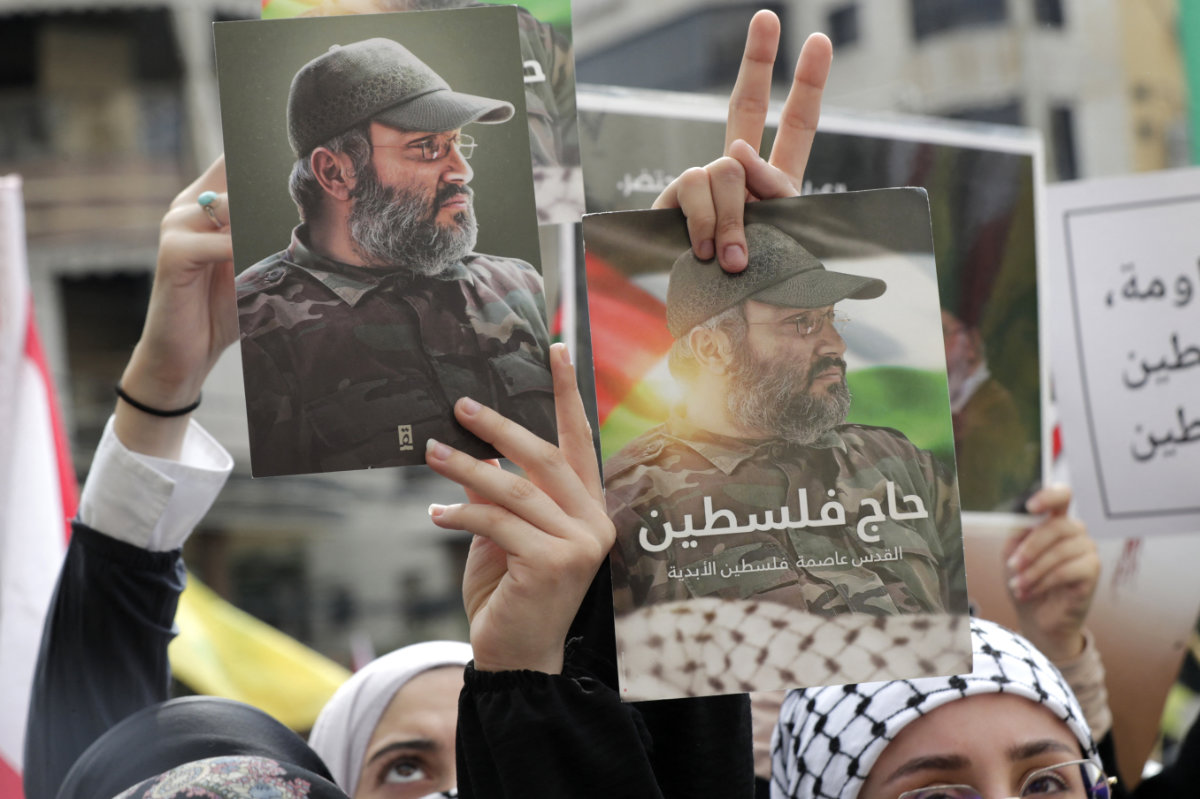
“The Israeli side did not incur high political, human and military costs.”
Thus far, there has been little in the way of international condemnation concerning Israeli strikes on southern Lebanon. Western diplomatic efforts have instead focused on Hezbollah’s demilitarization and demands for its separation from the conflict in Gaza.
Western diplomats, primarily led by France, have brought forward a series of proposals for a cessation of hostilities between Israel and Hezbollah.
Most of these hinge on Hezbollah moving its forces several kilometers from the border, a beefed-up Lebanese Army presence, and negotiations for Israeli forces to withdraw from disputed points along the border.
The eventual goal is the full implementation of UN Security Council Resolution 1701 that brought an end to the month-long war between Israel and Hezbollah in 2006 and that stipulated the full withdrawal of Israeli forces from Lebanon, their replacement by Lebanese and UNIFIL forces, and the disarmament of Hezbollah.

Hezbollah has signaled its willingness to entertain the proposals but has said there will be no deal in Lebanon before a ceasefire in Gaza. Israeli officials, meanwhile, have said a Gaza ceasefire does not automatically mean it will halt its strikes in Lebanon, even if Hezbollah does so.
“Hezbollah will accept the offered option to stop the confrontations in southern Lebanon and implement Resolution 1701,” said Suleiman.
However, Hezbollah’s acceptance of this agreement is contingent upon Israel’s acceptance of Egyptian-mediated deals with Israel, Suleiman added.
While life elsewhere in Lebanon continues as normal despite the armed exchanges in the south, discussions in the districts of Bint Jbeil, Tyre, and Nabatieh — just 5 km north of the border — are dominated by the question of who will compensate communities for their damaged homes, farms and businesses.
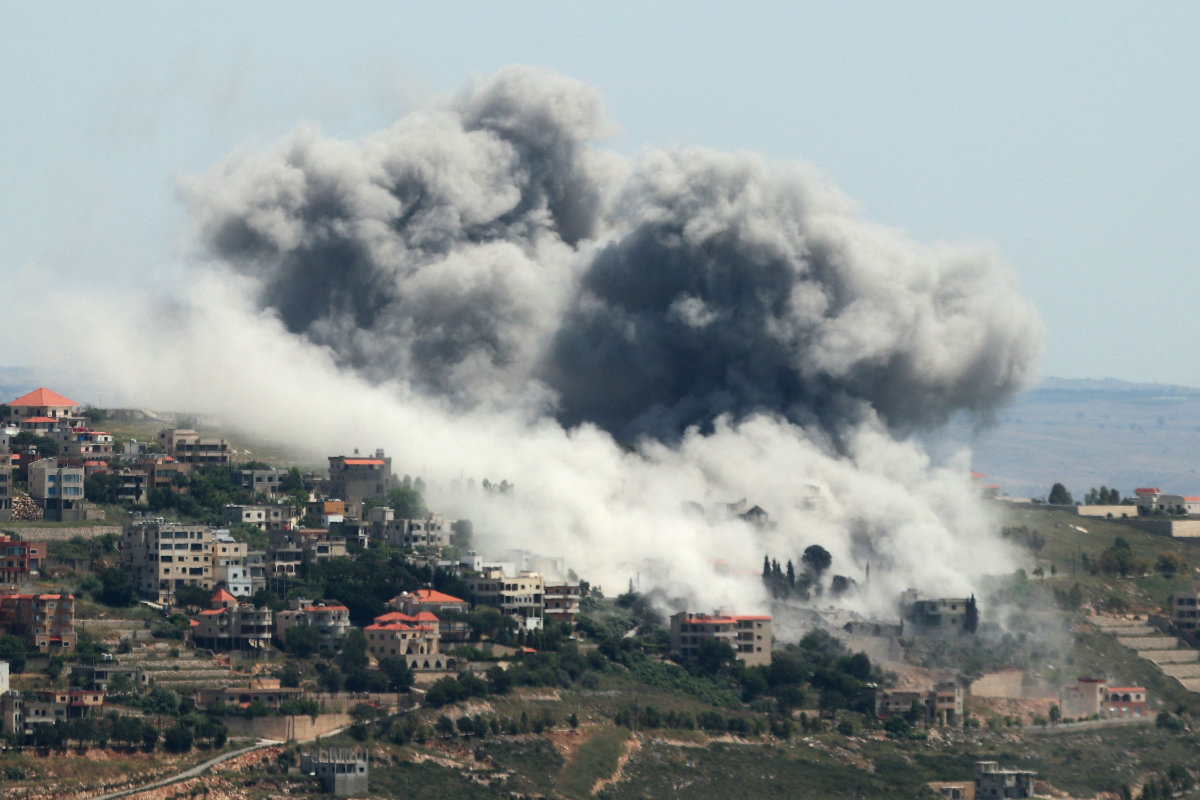
This uncertainty over compensation and how long the conflict will last has the potential to fuel resentment.
“Hezbollah is currently offering a displaced person whose house was destroyed $40,000, or he must wait for the end of the war for Hezbollah to rebuild his house,” said Al-Amin.
There is a lack of clarity, however, as to how equally this compensation will be distributed.
“Does Hezbollah, for example, reconstruct mansions, including what are considered architectural masterpieces that cost hundreds of thousands of dollars, at a different cost than ordinary houses destroyed by the bombing?” said Al-Amin.
“Does the average citizen accept this unfairness in compensation? This is one of the issues that awaits Hezbollah and causes a rift between it and its supporters.”

US says Houthis targeted Gulf of Aden with four drones and missiles
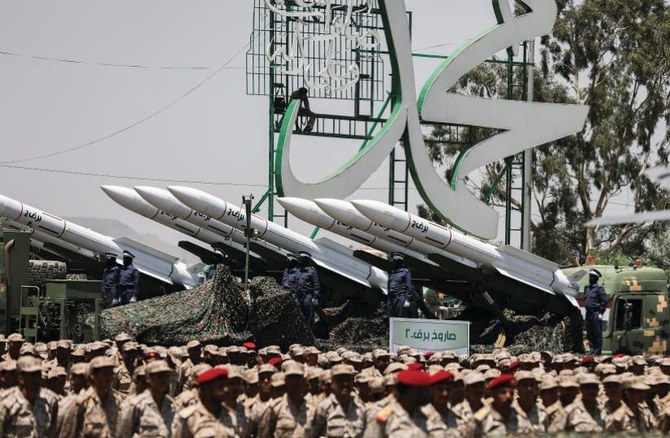
- The Yemeni militia launched 3 drones on Monday and an anti-ship ballistic missile on Tuesday; no ships were hit
- Meanwhile, journalism organizations call on the Houthis to investigate attempted assassination of a Yemeni journalist on Tuesday
AL-MUKALLA: The US Central Command said the Houthi militia in Yemen launched three drones and one anti-ship ballistic missile at international commercial and naval ships in the Gulf of Aden on Monday and Tuesday.
The group launched three unmanned aerial vehicles from Yemen toward the Gulf of Aden on Monday. One of the drones was destroyed by US-led marine coalition ships, Central Command forces destroyed another, and the third went down in the sea, causing no damage, the US military said.
Early on Tuesday, the Houthis launched an anti-ship ballistic missile over the Gulf of Aden, but did not target navy or commercial ships in key maritime lanes near Yemen.
“It was determined that these weapons presented an imminent threat to both coalition forces and merchant vessels in the region,” the US Central Command said.
UK Maritime Trade Operations, which monitors attacks on vessels, received a report from a ship's master on Tuesday of two explosions close to the vessel off the coast of Yemen, near the southern city of Aden.
Yahya Sarea, a Houthi military spokesman who regularly confirms assaults on ships, has not claimed responsibility on behalf of the militia for any strikes since Friday.
In the past six months, the Houthis have sunk one ship, seized another and launched hundreds of ballistic missiles, drones and remotely controlled boats targeting international commercial and navy ships in waters off the coast of Yemen and in the Indian Ocean. The Houthis say their aim is to put pressure on Israel to end its war against Hamas in Gaza.
The US responded in January to the Houthi attacks by placing the group back onto its list of foreign terrorist organizations, from which it had been removed in February 2021, organizing a coalition of naval task forces to safeguard the Red Sea, and launching strikes against Houthi sites in Yemen.
Mahdi Al-Mashat, head of the Houthi Supreme Political Council, said during a live-fire drill in Sanaa on Tuesday that the US had offered incentives to the group in return for halting their attacks on shipping. However, he vowed attacks on ships linked to Israel would continues, along with efforts to seize control of the parts of Yemen that remain under government control.
“We will continue … until our country’s whole national territory is liberated, and the blockade and injustice placed on our people in Gaza are removed,” he said.
Meanwhile, local and international journalism organizations urged the Houthis to investigate the attempted assassination of a Yemeni journalist in Sanaa on Tuesday.
The Yemeni Journalist Syndicate said that Mohammed Shubaita, secretary-general of the organization and assistant secretary-general of the Federation of Arab Journalists, was shot in the leg and stomach and is being treated at a hospital in Sanaa. A relative who was with him was killed in the attack and another was wounded.
“The Journalists Syndicate strongly condemns this sinful attack and holds the de facto authority in Sanaa fully responsible for the safety of our colleague Mohammed Shubaita,” the organization said.
The International Federation of Journalists similarly denounced the assault and urged the Houthis to investigate the incident.
Anthony Bellanger, the federation’s general secretary, said: “The authorities must immediately open an investigation to clarify the circumstances of the heinous attack against our colleague Mohammed Shubaita and his relatives.
“Yemen is a hostile country for journalists where their safety is jeopardized, and the investigation must take into account Shubaita’s role as a journalist and union leader.”
In a message posted on social media platform X, Reporters Without Borders condemned the attack and called for a “full investigation into this heinous crime.”
Intense fire on Lebanon front leaves casualties on both sides
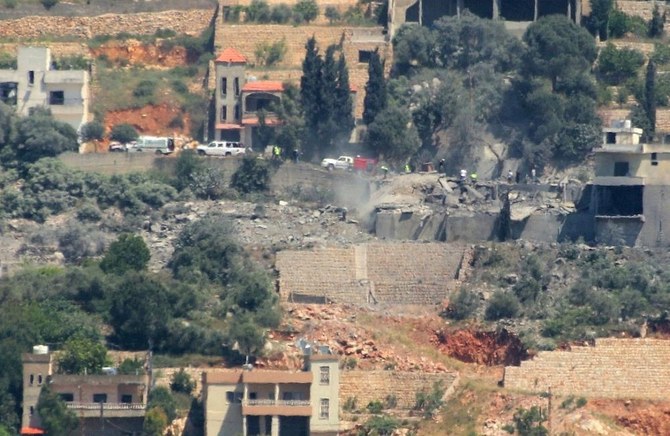
- Ten airstrikes hit the forest area stretching from the outskirts of Aita Al-Shaab to those of Ramyah within a few hours
- Hezbollah resorts to unconventional weaponry in response to Israel’s scorched-earth tactics
BEIRUT: The Israeli army launched more than 20 airstrikes on Lebanese border towns on Wednesday, resulting in deaths and injuries.
Alarms blared in the settlements of Adamit, Goren, Eilon, and Arab Al-Aramsheh in Western Galilee and Israeli media reported: “Hezbollah is leading a major attack from southern Lebanon using missiles and drones, and sirens are continuously sounding.”
Israeli news sites said: “Injuries occurred among the Israelis in the north due to missile strikes carried out by Hezbollah on Avivim, and the situation is difficult. Seven soldiers in the Al-Malikiyah site were hit, several killed and others injured, in a combined operation involving a missile salvo and suicide drone attacks. Hezbollah’s attacks also targeted the settlement of Kiryat Shmona.”
One outlet said a reservist soldier had been killed, while others reported power outages in Avivim and Dovev as a result of Hezbollah shelling.
Israeli army spokesman Avichay Adraee confirmed: “Airstrikes were launched at Hezbollah-affiliated targets in six areas in southern Lebanon, and Israeli warplanes raided the party’s military buildings in Kfarkela, Aita Al-Shaab, Khiam, and Maroun Al-Ras.”
Ten airstrikes hit the forest area stretching from the outskirts of Aita Al-Shaab to those of Ramyah within a few hours. The raids continued on the towns of Yaroun, Jabal Blat, Kfarkela, the outskirts of Rihan, Aaramta and Khiam.
One house in Khiam was completely destroyed. Paramedics working to remove the rubble found three Hezbollah members had been killed and another injured.
Aitaroun and Blida were hit with phosphorus bombs, which are banned internationally, while artillery shelling was recorded on the outskirts of the towns of Naqoura, Halta, Kfarchouba and Jabal Blat.
Civil defense teams in the Kfarkela-Tal Nahas area worked to extinguish a fire caused by one of the airstrikes.
According to a security source, the Israeli military utilized “GBU bunker-buster bombs in the airstrikes on Kafr Kila, renowned for their effectiveness in penetrating fortified structures. These bombs, part of Israel’s arsenal since 2000, were reportedly replenished through intensified American shipments.”
In retaliation, Hezbollah launched operations against Israeli military sites, some with guided missiles, causing deaths and injuries among Israeli soldiers. Hezbollah said this was in response to enemy attacks on southern villages and civilian homes.
A building used by Israeli soldiers in the Metula settlement was targeted, along with two structures in the Shlomi settlement, one in Hanita, two in Avivim, and a building at the Al-Manara site.
Later, Hezbollah targeted Israeli soldiers at the Raheb site, causing direct damage. A statement from the organization said it simultaneously targeted and destroyed espionage equipment at the same location.
The source highlighted a significant uptick in military engagement between the Israeli army and Hezbollah over the past 48 hours, coinciding with Israel’s incursion into and seizure of the Rafah crossing.
Media reports said: “Hezbollah has resorted to unconventional weaponry against Israeli sites in response to Israel’s scorched-earth tactics along the border, making the area inhospitable due to extensive phosphorus contamination. The cleanup process, aiming to rid the region of the pollutants used by the Israeli military to devastate crops, groundwater and soil, is anticipated to span several years.”
Israeli positions adjacent to the Blue Line unleashed heavy machine gun fire on the outskirts of Rmeich and Ramyah, targeting water tanks and vital roads connecting border communities.
Hezbollah has tied a ceasefire along the southern front to a cessation of hostilities in the Gaza Strip.




